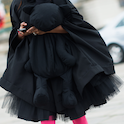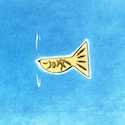http://www.grailed.com/listings/1252221 ... Montgomery
Random Rhetorical Hypebeast Fashion Thoughts
Re: random fashion jersey tucks
Them Grailed flips, this sold on Too Hot Limited last week for $340. Sly bugger. 
http://www.grailed.com/listings/1252221 ... Montgomery
http://www.grailed.com/listings/1252221 ... Montgomery
- 2
-

jujumaster - Posts: 178
- Joined: Sun Sep 20, 2015 4:18 pm
- Reputation: 784
Re: random fashion jersey tucks
can you make cash buying old stoney on ebay.it and flipping it on groiled?
- 1

-

bels - Yung Winona
- Posts: 5087
- Joined: Thu Jul 11, 2013 2:43 pm
- Reputation: 18872
Re: random fashion jersey tucks

they have these at Idea Books. Bels needs one surely?
Most of their tees are so bad (like the 'Etonian' and "I am a DJ' ones) I assume they are trying to be deliberately, ironically awful.
- 3
-

Lorcan - Posts: 118
- Joined: Sun Dec 28, 2014 12:55 pm
- Location: UK
- Reputation: 1472
Re: random fashion jersey tucks
I was watching a guy play the new final fantasy and he went AFK while his characters were standing knee-deep in the water at the beach. I couldn't help wondering how salt water could ruin leather boots.
- 2
“clothing for attractive rich people in their 20s to go to weddings in” — Zack Johnson on Vineyard Vines
-

adiabatic - Posts: 301
- Joined: Tue Mar 31, 2015 12:10 pm
- Reputation: 374
Re: random fashion jersey tucks
marg howell moleskin chinos sold out so i've ordered M&S; pleasingly, of the 17 reviewers on their site all give their age as 65+. is this the fabled end point of fashion. or just the end
- 6
-

pirxthepilot - Posts: 507
- Joined: Wed Jul 23, 2014 7:26 am
- Reputation: 2022
Re: random fashion jersey tucks
today i learned about people saying their second hand items are in "supreme condition" for ultimate SEO
- 10
-

posh_somme - Posts: 129
- Joined: Tue Apr 07, 2015 12:43 pm
- Reputation: 819
Re: random fashion jersey tucks
tried to order from m&s online, the site couldnt take my payment. ive had similar issues at boots online in the past. like i said about the media sector these companies are run by old people who have absolutely no clue about the internet. it just seems incredible in 2016 that things can be like this
- 1
-

pirxthepilot - Posts: 507
- Joined: Wed Jul 23, 2014 7:26 am
- Reputation: 2022
Re: random fashion jersey tucks
went to Barneys for some sales and saw some vachement clothes up close for the very first time. It reinforced my belief in the elephant in the room with regards to fashion and the internet: you really have to see clothes first-hand in order to appreciate them. vachement was no different. in photos, no matter how stylized or painstakingly arranged, doesn't really capture the hand-feel, the gravity, texture, drape of the clothes. the vachement pieces were almost psychedelic, even and in particular the DHL t-shirt, which has a very strange neck that I've only seen in mushroom-fueled visuals. some of the pieces are kind of meh (sweat pants, for example) but most of them were very bizarre, almost frightening.
the point of this isn't to say that vachement is the shit but rather a) im surprised how little i really understood the clothes before i handled them and b) the brand really does seem to be striking into some original territory (which I think is actually diluted a little given the choices in graphics).
the point of this isn't to say that vachement is the shit but rather a) im surprised how little i really understood the clothes before i handled them and b) the brand really does seem to be striking into some original territory (which I think is actually diluted a little given the choices in graphics).
- 11
-

teck - Posts: 537
- Joined: Thu Aug 01, 2013 10:17 am
- Reputation: 1812
Re: random fashion jersey tucks
I completely agree (about the seeing clothes in real life thing). One of the things that I think is bad about so much shopping moving online is that it makes quality slightly redundant. Every time I look on the COS website I'm like: 'Hey, COS is pretty good!', every time I go in the store I leave after 2 minutes. COS clothes don't look that different online compared to the stuff on LN-CC (compared to how different they actually are).
It massively benefits huge fast fashion chains who can put large amounts of money into shooting and retouching e-commerce photography. I have been inside COS e-commerce HQ: pristine shirts painstakingly pinned onto white polystyrene boards, it's probably a very artisanal process.
It massively benefits huge fast fashion chains who can put large amounts of money into shooting and retouching e-commerce photography. I have been inside COS e-commerce HQ: pristine shirts painstakingly pinned onto white polystyrene boards, it's probably a very artisanal process.
- 4

- oucho
- Posts: 508
- Joined: Thu Mar 27, 2014 5:34 pm
- Reputation: 3714
Re: random fashion jersey tucks
idk why i keep buying gap t shirts. they are so thin and everytime i buy one I go "dang, this fits nice but its so thing i can see my nipples" and then i keep going back
- 10
i'd walk a mile for a camel
-

alby - Posts: 543
- Joined: Thu Jan 09, 2014 10:00 pm
- Reputation: 2659
Re: random fashion jersey tucks
My Moncler junya down jacket is so comfy and stylish that I often fall asleep with it on
So I b steezinwhile I bsleepin which I call steezsleepin
it's not sweaty BC down is body temperature regulating even if your place has heat on blast
So I b steezinwhile I bsleepin which I call steezsleepin
it's not sweaty BC down is body temperature regulating even if your place has heat on blast
- 3
Last edited by freddy on Wed Nov 30, 2016 2:16 pm, edited 3 times in total.
-

freddy - Posts: 934
- Joined: Sun Sep 15, 2013 11:35 pm
- Reputation: 1710
Re: random fashion jersey tucks
Is the game over once you are grailed thefuck out? Like, what happens next?
I dunno but I'ma get there someday and report my feels back on here. !remindmegrailedthefuckoutstatus
if Grails r dumb, what do we live for then?
I dunno but I'ma get there someday and report my feels back on here. !remindmegrailedthefuckoutstatus
if Grails r dumb, what do we live for then?
- 3
Last edited by freddy on Thu Dec 01, 2016 5:08 am, edited 1 time in total.
-

freddy - Posts: 934
- Joined: Sun Sep 15, 2013 11:35 pm
- Reputation: 1710
Re: random fashion jersey tucks
I have a soloist shirt that took me like 10 minutes to figure out how to button because it's got three plackets and the buttons are all on different plackets and there are hidden extra buttons and fake buttonholes and one of the buttons you have to button the reverse way oh god
- 7
-

Bonobonobo - Posts: 120
- Joined: Mon May 02, 2016 1:02 am
- Location: CA
- Reputation: 626
Re: random fashion jersey tucks
- 1
“clothing for attractive rich people in their 20s to go to weddings in” — Zack Johnson on Vineyard Vines
-

adiabatic - Posts: 301
- Joined: Tue Mar 31, 2015 12:10 pm
- Reputation: 374
Re: random fashion jersey tucks
Apres ski is a universally used term for anything you do in the afternoon/evening after a day of skiing in a resort town
Having nylon in them is probably a durability/stretch thing, vicuna wool has very fine fibers. It's also really $$$, even in raw form:
https://www.pascuali.de/en/vicuna-100-v ... n/a-60816/
they're expensive but so is real estate in telluride/st Moritz/Whistler
I don't find these nearly as egregious as like, $600 cotton tees say
Having nylon in them is probably a durability/stretch thing, vicuna wool has very fine fibers. It's also really $$$, even in raw form:
https://www.pascuali.de/en/vicuna-100-v ... n/a-60816/
they're expensive but so is real estate in telluride/st Moritz/Whistler
I don't find these nearly as egregious as like, $600 cotton tees say
- 1
-

ramseames - Posts: 2235
- Joined: Thu Sep 12, 2013 6:14 pm
- Location: vancouver
- Reputation: 6690
Re: random fashion jersey tucks
flaxsisters for 5 grand I want to hear the thoughts of them 6 Vicuna shaved for my sweatpants like when Homer gets Snake's hair transplanted.
- 1
-

jujumaster - Posts: 178
- Joined: Sun Sep 20, 2015 4:18 pm
- Reputation: 784
Re: random fashion jersey tucks
Apres ski is the social component to ski holidays where you like drink schnapps with other people in your rarified social sphere
- 1

-

bels - Yung Winona
- Posts: 5087
- Joined: Thu Jul 11, 2013 2:43 pm
- Reputation: 18872
Re: random fashion jersey tucks
I've come to what I believe is a nice realization over the last couple of days. It's probably something some of you have thought about before but the ideas connecting it got me to worked up not to share it.
I assembled this belt a couple of weeks back that can be found in the . And then a few weeks later I made a cross body strap which I've been using as a belt since. They both share the attribute of not securing the belt in the orthodox hole meets pin fashion, and these 'new' ways were pretty nice in my mind. Then a few days ago I remembered a bunch of stuff Don Norman speaks on in his 'The Design of Everyday Things', at least I think it's from there but I can't find the passage right now. He talks about how when something is designed really well it becomes so natural that it's solution becomes the standard execution of that type of object.
A good example is a spoon, it has a handle and a small bowl. All spoons look like this, it's what makes a spoon a spoon. But the same goal could be achieved with a very small bowl, but this is impractical and a spoon is very practical so that's why it looks the way it looks (actually now that I think about it this might come from Louis Kahn).
Anyway getting to my point is that a belt is also a good example of this.A belt will generally be a punch holed strap and a buckle with the classical pin in it. But this is not the only way to make a belt. And when I say make a belt I mean the essence of the belt, the tightening-and-securing-of-pants-function of the belt. Most belts look like this because it's a very practical way to secure a belt. But you can secure belts in as many ways as we can collectively conceive of. Some of them are bound to be extremly bad but I refuse to believe that he only good belt has a hole and a pin. This limits what a belt can be.
This is starting to sound like a belt is the best thing in the world, but the point I want to make is that this goes for all garments. If we identify the essences of a garment or whatever really and think about how it can be executed differently there are bound to exist interesting solutions. I believe some good design challenges those automated concepts we have of how something should function and look. There is a Swiss contemporary architect named Pascal Flammer whose lecture I attended when he was in Sweden. In his lecture he explained how he wants to avoid the automatisms that we have in the building industry. He wants to question every decision he makes and see if the conclusion he comes to is interesting due to approaching the problem in a previously glossed over way.
This goes for clothes too, be it how a belt is secured, how a dress is cut or even how something is worn we should think about how it can be done in new ways to push ourselves forward culturally, functionally, whateverly. I don't believe the belts I've made are revolutionary, the one in the DIY thread isn't even working properly, but I think this idea of actively questioning our own automatisms about clothes is something really essential to get forward.
Thoughts?
I assembled this belt a couple of weeks back that can be found in the . And then a few weeks later I made a cross body strap which I've been using as a belt since. They both share the attribute of not securing the belt in the orthodox hole meets pin fashion, and these 'new' ways were pretty nice in my mind. Then a few days ago I remembered a bunch of stuff Don Norman speaks on in his 'The Design of Everyday Things', at least I think it's from there but I can't find the passage right now. He talks about how when something is designed really well it becomes so natural that it's solution becomes the standard execution of that type of object.
A good example is a spoon, it has a handle and a small bowl. All spoons look like this, it's what makes a spoon a spoon. But the same goal could be achieved with a very small bowl, but this is impractical and a spoon is very practical so that's why it looks the way it looks (actually now that I think about it this might come from Louis Kahn).
Anyway getting to my point is that a belt is also a good example of this.A belt will generally be a punch holed strap and a buckle with the classical pin in it. But this is not the only way to make a belt. And when I say make a belt I mean the essence of the belt, the tightening-and-securing-of-pants-function of the belt. Most belts look like this because it's a very practical way to secure a belt. But you can secure belts in as many ways as we can collectively conceive of. Some of them are bound to be extremly bad but I refuse to believe that he only good belt has a hole and a pin. This limits what a belt can be.
This is starting to sound like a belt is the best thing in the world, but the point I want to make is that this goes for all garments. If we identify the essences of a garment or whatever really and think about how it can be executed differently there are bound to exist interesting solutions. I believe some good design challenges those automated concepts we have of how something should function and look. There is a Swiss contemporary architect named Pascal Flammer whose lecture I attended when he was in Sweden. In his lecture he explained how he wants to avoid the automatisms that we have in the building industry. He wants to question every decision he makes and see if the conclusion he comes to is interesting due to approaching the problem in a previously glossed over way.
This goes for clothes too, be it how a belt is secured, how a dress is cut or even how something is worn we should think about how it can be done in new ways to push ourselves forward culturally, functionally, whateverly. I don't believe the belts I've made are revolutionary, the one in the DIY thread isn't even working properly, but I think this idea of actively questioning our own automatisms about clothes is something really essential to get forward.
Thoughts?
- 13
-

costanza - Posts: 66
- Joined: Tue Sep 27, 2016 4:43 pm
- Reputation: 263
Re: random fashion jersey tucks
- 1
“clothing for attractive rich people in their 20s to go to weddings in” — Zack Johnson on Vineyard Vines
-

adiabatic - Posts: 301
- Joined: Tue Mar 31, 2015 12:10 pm
- Reputation: 374
Who is online
Users browsing this forum: No registered users and 17 guests





